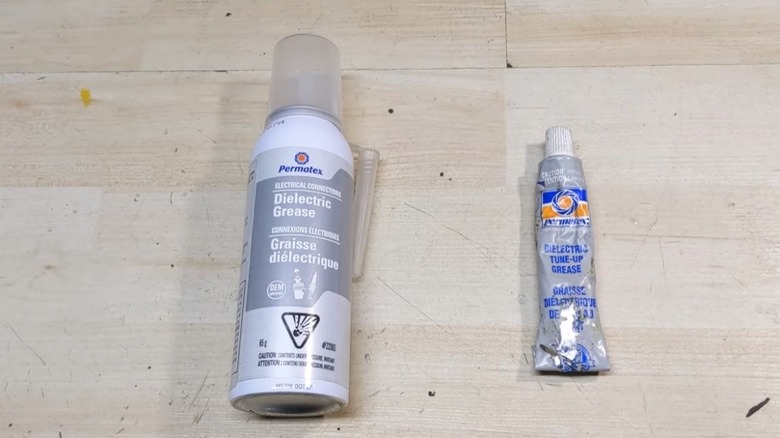Dielectric Grease: What It Is, And What It's Used For
Dielectric grease isn't the name of an evil supervillain, and it's not a coroner's shorthand for someone's cause of death (in this case, by electricity). It is, however, a type of grease used on a variety of things, from traffic lights to marine applications and, yes, on your automobile.
In fact, it's so versatile that while it is mainly used to protect and insulate electrical components, it can also be used as wheel-bearing grease. As with most lubricants, dielectric grease is made from multiple components, including a silicone base and a thickener. It typically looks like an opaque white gel but, depending on the manufacturer, can take on a slightly translucent grayish appearance.
Dielectric grease is sometimes called tune-up grease and is typically used to protect against corrosion. Despite its relationship to electricity, it does not conduct electrical current. Instead, it acts as an insulator that repels moisture and helps to keep other harmful elements (i.e., dirt and debris) away from a connection so as not to rust prematurely.
The most common uses for dielectric grease are on battery terminals (and may help your car's battery from draining so fast), spark plug boots, bulb sockets, trailer connectors, and other electrical connections. It doesn't harm plastic or rubber components, and thanks to its silicone-based composition, it won't get hard, freeze, dry out, or melt, making it ideal for applying to rubber gaskets and will help prevent them from drying and cracking.
Go dielectric grease lighting!
Thus, it can be used in various settings like car repair facilities, in the home for electrical work, and wiring on recreational vehicles. Additionally, dielectric grease's high insulation factor can protect traffic and street lights from rain and snow and can be used on boat electronics to protect them from the ocean and sea salt spray. The grease's hydrophobic nature seals out water, so the circuit continues to work correctly.
It must be appropriately applied since it is often misconstrued as an electrical conductor (not an insulator). If too much is left on the surface, the flow of electricity could be hindered.
For instance, depending on how often you actually need to change your car's spark plugs, you can put some on the ceramic portion of a plug, but if it gets on the metal terminal, it could obstruct the electrical connection. Applying it to the inside of the spark plug boot (while avoiding the electrical contact itself) will help keep the ignition coil spark from arcing around to ground.
Dielectric grease is cheap to buy and is available virtually everywhere. It's ready to use out of the container and doesn't require additional mixing with other ingredients. Last but not least, it can be easily removed with standard petroleum distillates.
